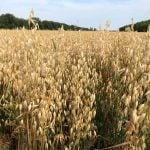The Canola Council of Canada recommends blackleg scouting a week or two before straight cutting or swathing. Don’t wait more than a week after harvest, the Council advises, or plants may be too decomposed to pick out symptoms.
While scouting, pull plants and clip stems below ground level. Black discolouration in the stem’s cross section is a sign of blackleg. Rate the severity on a scale of zero to five. Zero means no discolouration. A two means 26 to 50 per cent of the cross section is discoloured. Five means blackleg has killed the plant and the stem is fully discoloured.
Read Also

Measuring the components of healthy soil in Alberta
The data Prairie farmers get from chemical analysis of soils are necessary to develop a field fertility program — but as an Alberta program shows, those data don’t tell the whole story needed to assess soil health.
Check a few sites in each field. Pull a few random plants at each site. If blackleg severity averages 1.5 or more, resistance is likely breaking down in that field.
If resistance is breaking, farmers should move to a one-in-four canola rotation, the Council states. Farmers can also use varieties known to have different blackleg resistance genes, the Council adds. Fungicides may have some yield benefit if resistance has eroded, the Council states in an April 2015 edition of CanolaWatch.
For more information on blackleg, visit www.canolawatch.org and search “blackleg.”
















